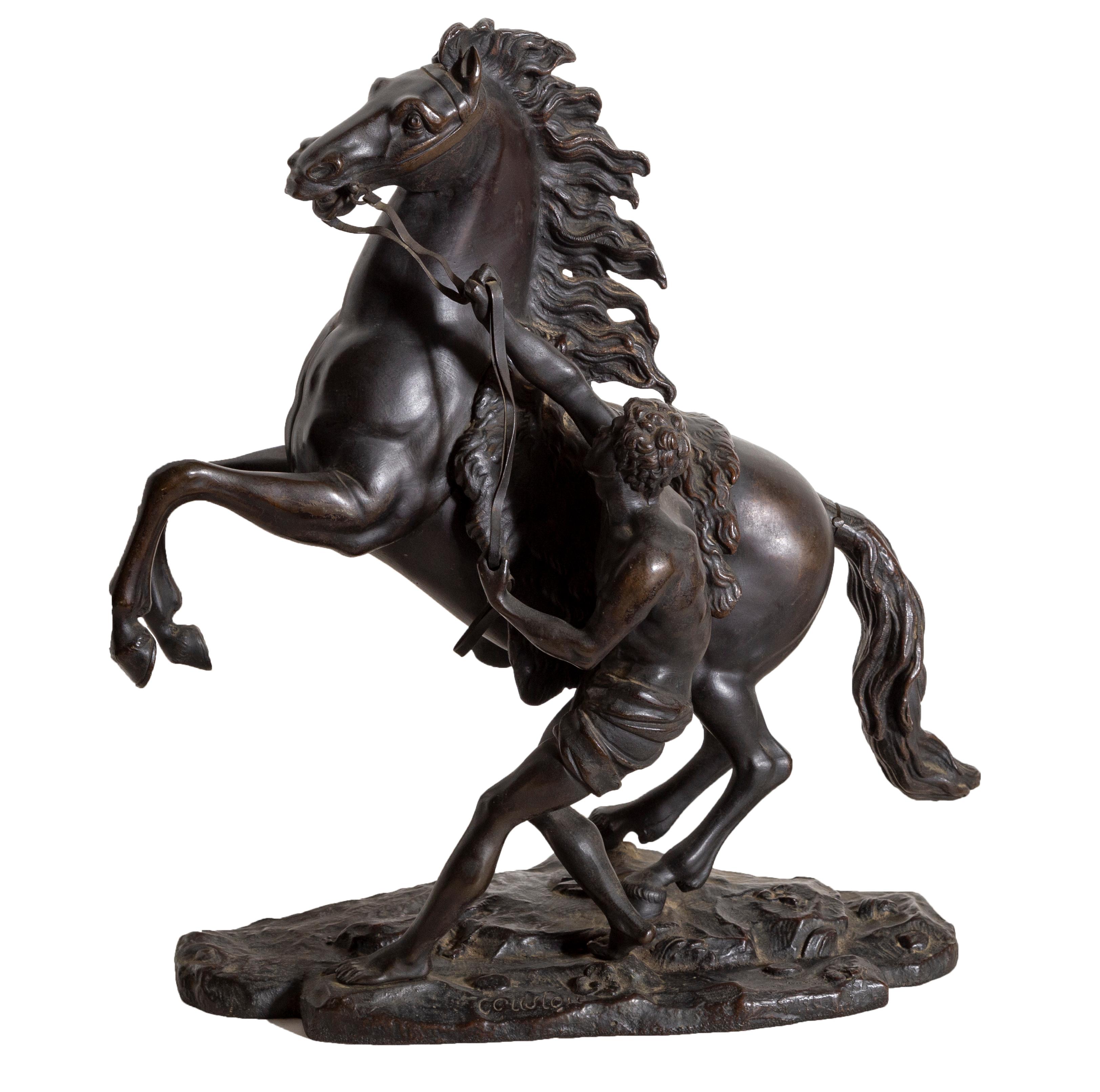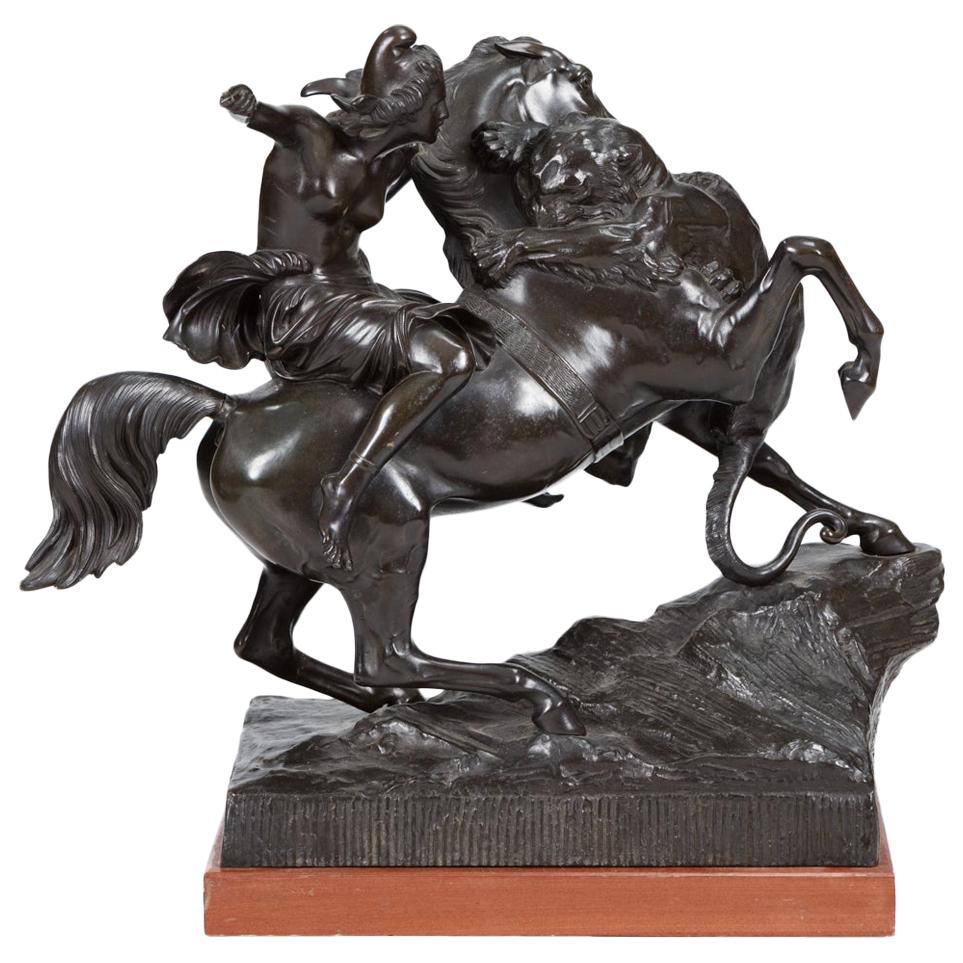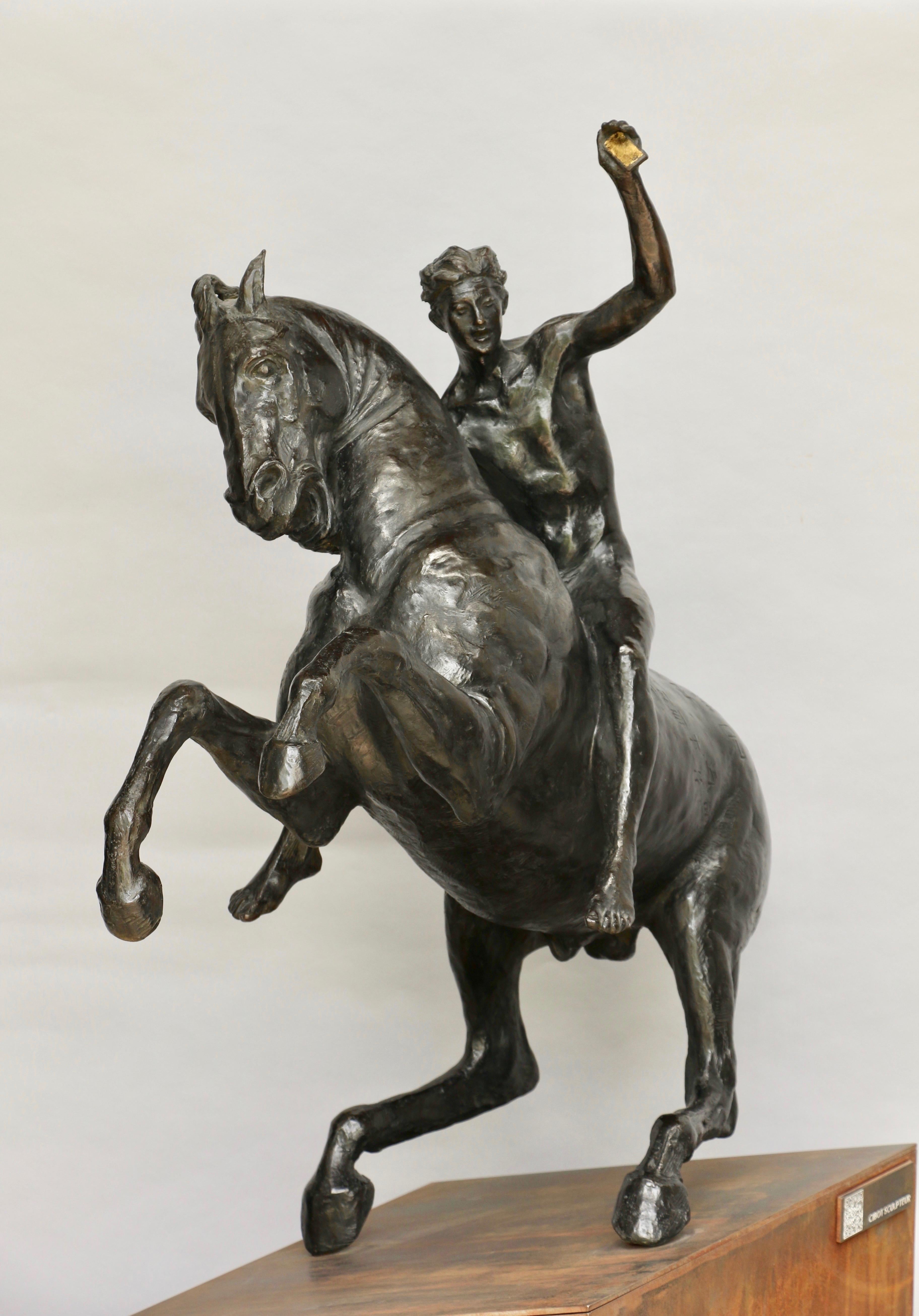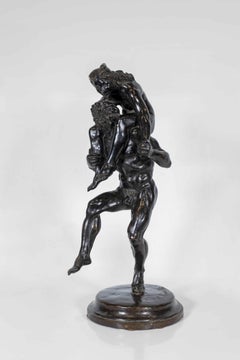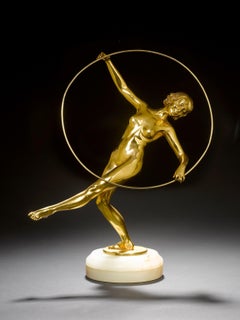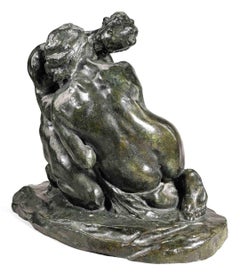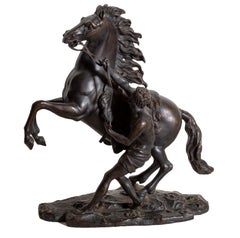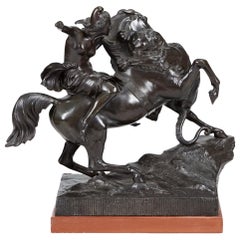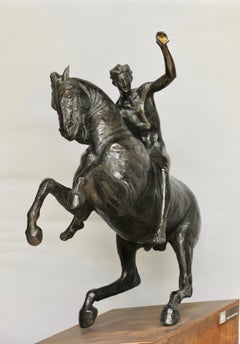Items Similar to Lady Godiva
Want more images or videos?
Request additional images or videos from the seller
1 of 2
Léon MignonLady Godiva
$20,399.76
£15,000
€17,596.77
CA$28,562.21
A$31,483.35
CHF 16,267.66
MX$376,361.20
NOK 204,646.10
SEK 192,338.19
DKK 131,432.36
About the Item
bronze with dark brown patina
72 x 69 cm (28⅜ x 27⅛ in.)
signed 'L. MIGNON'; with an indistinct foundry inscription
PROVENANCE:
Private collection, London
- Creator:Léon Mignon (1847 - 1898, Belgian)
- Dimensions:Height: 28.35 in (72 cm)Width: 27.17 in (69 cm)
- Medium:
- Period:
- Condition:
- Gallery Location:London, GB
- Reference Number:1stDibs: LU1414212136872
About the Seller
5.0
Recognized Seller
These prestigious sellers are industry leaders and represent the highest echelon for item quality and design.
Established in 2006
1stDibs seller since 2020
19 sales on 1stDibs
- ShippingRetrieving quote...Shipping from: London, United Kingdom
- Return Policy
Authenticity Guarantee
In the unlikely event there’s an issue with an item’s authenticity, contact us within 1 year for a full refund. DetailsMoney-Back Guarantee
If your item is not as described, is damaged in transit, or does not arrive, contact us within 7 days for a full refund. Details24-Hour Cancellation
You have a 24-hour grace period in which to reconsider your purchase, with no questions asked.Vetted Professional Sellers
Our world-class sellers must adhere to strict standards for service and quality, maintaining the integrity of our listings.Price-Match Guarantee
If you find that a seller listed the same item for a lower price elsewhere, we’ll match it.Trusted Global Delivery
Our best-in-class carrier network provides specialized shipping options worldwide, including custom delivery.More From This Seller
View AllLa Fileuse
By Albert-Ernest Carrier-Belleuse
Located in London, GB
signed 'A. CARRIER-BELLEUSE' (on base)
Category
Mid-19th Century Figurative Sculptures
Materials
Bronze
Faun and Nymph
Located in London, GB
signed 'A. Rivalta' (on the base)
Category
Late 19th Century Figurative Sculptures
Materials
Bronze
Dancing Girl
Located in London, GB
gilt bronze on marble base
Category
20th Century Figurative Sculptures
Materials
Marble, Bronze
The Embrace
Located in London, GB
bronze, dark brown green patina
signed 'A. Pina' and stamped 'A. Valsuani Cire Perdue'
PROVENANCE
Private collection, UK
Category
20th Century Nude Sculptures
Materials
Bronze
$33,999
Pan and Maidens
By Ary Bitter
Located in London, GB
Silvered bronze with marble base
Category
1920s Figurative Sculptures
Materials
Bronze
$29,919
Satyr from a Padovan model
Located in London, GB
(Possibly after) THE WORKSHOP OF SEVERO DA RAVENNA (ITALIAN, 1465-1543)
Satyr from a Padovan model
18th/early 19th Century
bronze
21 x 14 x 16 cm (8¼...
Category
Early 19th Century Nude Sculptures
Materials
Bronze
You May Also Like
Cheval de Marly, Bronze Equestrian Sculpture by Guillaume Coustou
By Guillaume Coustou
Located in Long Island City, NY
Artist: After Guillaume Coustou, French (1677-1746)
Title: Cheval de Marly
Medium: Bronze Sculpture, signature inscribed
Size: 22 x 19 x 9 in. (55.88 x 48.26 x 22.86 cm)
This be...
Category
Early 20th Century Romantic Figurative Sculptures
Materials
Bronze
Amazone zu Pferde, Bronze Equestrian Statue after August Kiss 'German, 1802-1865'
Located in Dublin 8, IE
Amazone zu Pferde is an 1841 bronze equestrian statue by August Kiss, installed outside the Altes Museum in Berlin, Germany.
It was based on a smaller clay model which August Kiss first built in 1839. Amazone zu Pferde stands opposite its companion statue, Löwenkämpfer.
A bronze copy, cast in 1929, sits in front of the Philadelphia Museum of Art. Zinc copies also exist in England, Italy, and elsewhere in Germany
August Kiss (1802-1865)
August Kiss was trained at the Ironworks in Paprotzan and the Royal Iron Foundry Gleiwitz. He further took lessons in chasing and drawing at the Academy under Leonhard Posch. From 1825 he worked as a student and later as assistant in the workshop of Daniel Rauch. In 1830 Kiss received a teaching position at the Königlichen Gewerbeinstitut in Berlin. He also repeatedly collaborated with his friend and colleague Karl Friedrich Schinkel. The marble version of the fighting Amazone sculpture, one of his masterpieces, is nowadays to be found in the Royal Museum of Fine Arts Antwerp. Moreover Kiss designed the tombs of Karl Friedrich Schinkel and Christian Daniel Rauch.
Category
Antique 19th Century German Victorian Figurative Sculptures
Materials
Bronze
Centaur abducting a woman
By Aimé-Jules Dalou
Located in PARIS, FR
Centaur abducting a woman
by Aimé-Jules DALOU (1838-1902)
A bronze group sculpture with a dark brown patina
Signed on the base "Dalou"
Cast by "A.A. Hébrard" (with the foundry sta...
Category
Late 19th Century French School Figurative Sculptures
Materials
Bronze
2049 Rider Big Model Bronze
By Elisabeth Cibot
Located in Pasadena, CA
Bronze 1/3 black patina or gold leaf Korten steel base leaving
sculpture on wheels, water jet engraving QR coded cartridge.
Born in 1960 in a family of artists collecting the br...
Category
2010s Contemporary Figurative Sculptures
Materials
Bronze
Saddled Horse
Located in PARIS, FR
Saddled Horse
by Alfred PINA (1887-1966)
Bronze with a dark brown patina
France
1st half of the 20th century
height 31 cm
length 50 cm
depth 23 cm
Biography :
Alfred Pina (1887-1...
Category
Early 20th Century French School Figurative Sculptures
Materials
Bronze
Antique Horse Bronze Trotting Stallion Isidore Jules Bonheur (France, 1827-1901)
By Isidore Jules Bonheur
Located in SANTA FE, NM
Antique Horse Bronze
Portrait of a Trotting Stallion
Isidore Jules Bonheur (France, 1827-1901)
Cast bronze mounted on a rectangular plinth with dark brown patina,
Signed: I. BONHEUR
17 x 11 3/4
A brilliant exploration of a stallion in full trot. The patina is a deep, warm walnut brown with honey-colored tones.
Isidore Bonheur was best known and the most distinguished of the 19th century French animalier sculptors. Isidore, the younger brother of Rosa Bonheur and older brother of Auguste, began his studies of painting initially with his father, who was friends with Francisco Goya. By 1848 he debuted at the Paris Salon having discontinued animal and landscape painting to concentrate on creating sculptures and in 1849, Bonheur enrolled at the Ecole des Beaux Arts. He won medals at the Paris Salon in 1859 and did so again in 1865 and in 1869. After entering the Exposition Universelle 1855, he won the Gold Medal in 1889. In the 1870s exhibited in the London at the Royal Academy of Arts where he earned great prestige and won the coveted Medaille d’Or. After winning numerous other medals and prizes, Bonheur was awarded the Legion d' Honneur in 1895 and he was Knighted in Portugal, Spain and France. Bonheur continued exhibiting at the Paris Salon until 1899.
Many of his bronzes were fabricated at the foundry owned by Hippolyte Peyrol, Bonheur's brother-in-law by marriage to Isidore’s youngest sister Juliette Bonheur. The Peyrol casts for both Rosa and Isidore are exceptionally well executed which suggests a strong working relationship between the founder and sculptor. There is little doubt that Isidore Bonheur was an acute observer of nature; his animals were not anthropomorphized but modelled to catch movement or posture characteristics of the particular species he was sculpting. He achieved this most successfully with his sculptures of horses which are usually depicted as relaxed rather than spirited. These figures are among his most renowned works and his equestrian models became very popular, particularly among the British aristocracy.
An acute observer of nature, his sculptures reflect his commitment to the Realist school - with precise detailing of the movements of animals in their natural habitats. Ultimately, His naturalistic studies of animals are now some of the most highly sought after works by any of the animalier. He was possibly inspired by his many visits to the Buffalo Bill Wild West Show...
Category
1870s Realist Figurative Sculptures
Materials
Bronze
More Ways To Browse
Lady Sculpture
Guitarist Sculpture
Harden Sculpture
Herbert Haseltine
Howling Wolf
Indiana Hope Sculpture
Indoor Tree Sculpture
Jacqueline Picasso Ceramic
Jiang Tie Feng Sculpture
Jimmie Martin
Joseph Ndandarika
Julie Jaler
Kaws Resting
Klein Blue Sculpture
Kurt Weiser
Leonard Baskin Bronze Sculpture
Leonard Baskin Bronze
Lolly Pop
